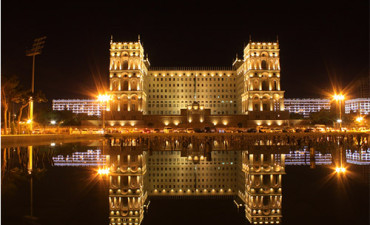The Village of Kish
Azerbaijan bursts out a rich natural scenery, as well as hooking travelers with the historic and cultural value. It has been a homeland to dozens of various historic exhibits from different eras and centuries, attracting various interested parties like scientists, historians and usual tourists who take a great interest in this harbor of East culture. Back in the days, when the transportation system we all know today didn't exist and people were forced to take on a long journey across the continents to sell their goods and make money for a living, The Great Silk Road was created. Hundreds of paths that all meet in the same exact destinations - spots crossed by those roads were destined to become a huge deal, growing rapidly to adapt to hundreds and thousands of visitors passing the cities each day. One of those "diamonds of The Silk Road" was Sheki City. Village of Kish located not far from it has suffered the same fate.
Now a small settlement, a couple of centuries ago it was considered to be a big and powerful city with its own economics and culture. But the historical significance of this place doesn't start nor end with its closeness to the Silk Road. It has one of the unique ancient landmarks of Azerbaijan, marking different centuries of azerbaijani culture, such as The Dokhon necropolis of the 4th century BC, the “Gyalarsyan-Gerarsan” ("come and see" from azerbaijani language) fortress of the 15th century, the mosque of the 19th century and probably the most popular destination among tourists - The Church of Kish.
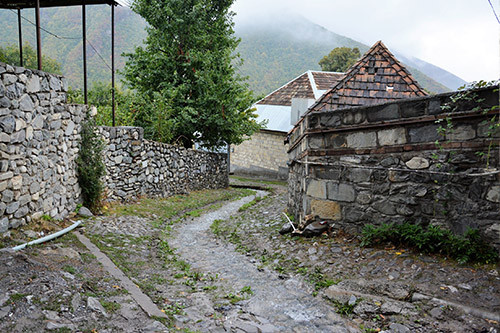
Kish is the gorgeous corner of Azerbaijan, a village tucked away at the southern side of the mountains of the main Caucasus range, settled right at the foot of it, nearby the river that carries the same name as the settlement itself. The views there are understandably breathtaking, with miles and miles of snowy hills during the winter alongside with lush green forests with flower fields and icy refreshing river water during summertime. But the impressive natural landscapes are not nearly the only reason people to this day find it mandatory to visit this small village if they come to Sheki.
It has an immaculate amount of different historic monuments, one of them being the ruins of once a magnificent and highly fortified fortress "Gyalarsyan-Gerarsan", which was widely used for defensive purposes. Its specific name has an interesting backstory.

When Iranian ruler Nadir has decided to take over Sheki Khanate in 1806, the khan of Sheki was forced to hide away in that fortress, but instead of giving up, as Nadir was suggesting to him, he declined the offer. Nadir was stunned by such bravery and sent another messenger, asking how the Sheki Khanate is planning to defend its independency to which the ruler replied without a hesitation "Gyalarsyan-Gerarsan" (“Come and see for yourself"). After that the fortress was famous by that name.
It's also a beautiful place, with stone walls peeking out the forest, hiding in the safety of greenery and nature, so visiting this architectural monument is an experience that will enrich not only your historical point of view but also help you feel at peace with nature.
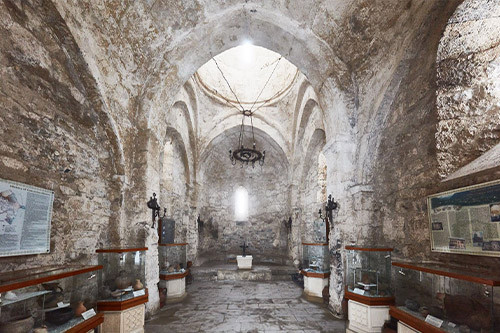
The next and probably the most famous and wide known tourist spot is situated inside the village. Travelling across the small cobblestone roads, you get to the ancient church that has been present right on this exact place for last centuries. The story goes to tell that this church was built here back in 1 century B.C. by Saint Elisha, who travelled across the continent. Here he settled down and built this church in order to start preaching Christianity around the whole region.
Back then, today’s Azerbaijan’s territory belonged to the country called Caucasian Albania, which has had the diversity when it came to the religions preached there. Being a homeland to Zoroastrianism and other pagan religions, Albania was also a spark that has started the spreading of Christianity across the Caucasian countries. In a lot of efforts for it were made by Saint Elisha, who became quite popular among people in the village of Kish and settlements all around it.
The Kish church has been saved wonderfully, barely touched by the destruction time brings, but it still was majorly restorated and brought back to life. Still, the meaning it holds – as one of the first and important churches on the territory of Azerbaijan and Caucasus, is still alive and present, therefore a lot of religious people love to visit it as well as tourists who are just interested in ancient architecture.
The big role in the excavations was played by the world-famous Norwegian explorer Thor Heyerdahl, who was quite fond of Azerbaijan, visiting it several times over the years. In order to cheerish the input he had on discovering such an important historic monument his bust is placed right in front of the entrence to the church.
Sheki along with its close-by villages are breathtaking, not only naturally but also because of the architectural masterpieces created by human’s hand. If you’re visiting Azerbaijan, it is a must-see option to spend some time exploring the wonders of maybe the most culturally rich regions of the country. Azerbaijan Travel International suggests you a way to do it without worrying yourself too much about long trips and language barrier. Our company has a perfect Gabala-Sheki tour, that takes you along the most interesting places around the country, offering a deeper insight into the culture of “The Land of Fire”.
Tags: group tour , Azerbaijan , Greater Caucasus , Sheki , Tour , Sheki city , Caucasian Albania , Tourism
Recent Posts
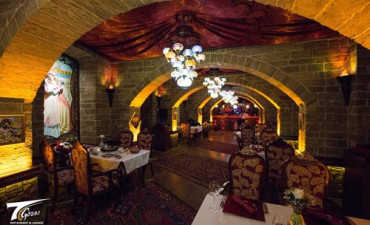
Buy any tour and get 15 percent discount in Baku restaurants

Festivals In Azerbaijan

Great Silk Road In Azerbaijan
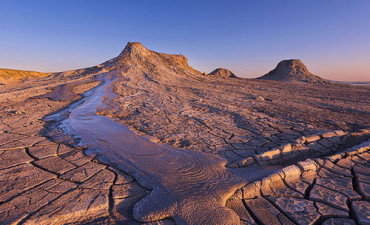
Guide to outdoor activities
